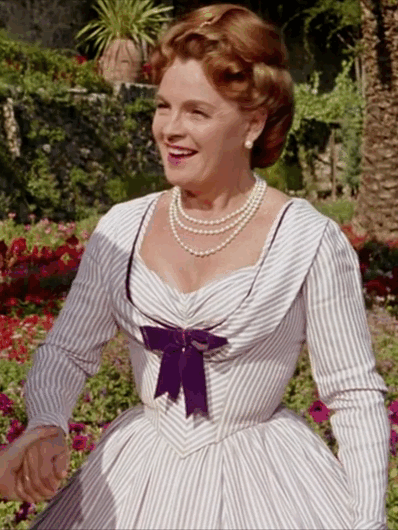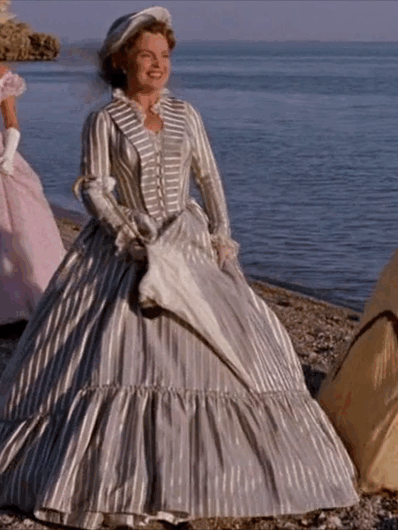#19th century portugal
Explore tagged Tumblr posts
Text

Infanta Maria Francisca of Portugal
Artist: Vicente López Portaña (Spanish, 1772–1850)
Español: Retrato de la infanta María Francisca de Portugal (1800-1834), esposa del infante Carlos María Isidro de España e hija del rey Juan VI de Portugal y de Carlota Joaquina de España.
Genre: Portrait
Date: circa 1823
Medium: Oil on Canvas
Collection: Royal Academy of Fine Arts of San Fernando, Madrid, Spain
Biography
Maria was born in Queluz, Portugal. On 22 September 1816 in Madrid, she married her uncle Infante Carlos Maria Isidro of Spain, "Count of Molina".
In 1833, Maria Francisca, her husband and children were exiled from Spain because they refused to recognize Isabella II as heiress to the Spanish throne. They went first to Portugal and then to Alverstoke in Hampshire, England. While in Hampshire, Maria became ill and died on 4 September 1834.
A crowd of several thousand was known to have visited the village to pay their respects as her body lay at the rectory of St Mary's Gosport, where her funeral was held and a marble stone honours her memory. Although initially interred in St Mary's Catholic Church Gosport, Maria Francisca's remains were later transferred to Trieste Cathedral in Italy, where the Carlist pretenders and their wives are buried.
Four years after her death, Carlos married Maria Francisca's own sister, Maria Teresa, Princess of Beira.
#portrait#portugal#spain#19th century painting#19th century portugal#vicente lopez portana#spanish painter#spanish culture#spanish monarchy#woman#custome#crown#jewelry
1 note
·
View note
Text

Belém Tower, Lisbon, Portugal. Fair Lusitania. 1874. Cover detail.
Internet Archive
#castle#covers#book cover#gold gilt#medieval#architecture#nemfrog#1874#19th century#belem tower#lisbon#landmarks#portugal
722 notes
·
View notes
Text

Sintra, Portugal 1860/80
#sintra#portugal#1860s#1880s#europe#history#vintage#photography#pics#architecture#19th century#places#cityscape#mountains
30 notes
·
View notes
Text

Torre dos Clerigos, Oporto, Portugal, James Holland, 1837
#art#art history#James Holland#landscape#landscape painting#cityscape#Oporto#Portugal#British art#English art#19th century art#oil on canvas#Yale Center for British Art
173 notes
·
View notes
Text









The Sissi Trilogy + Costumes
Ludovika, The Duchess in Bavaria's white & purple dress in Sissi - The Young Empress (1956) & Sissi - Fateful Years of an Empress (1957).
// requested by @thatmawe
#Sissi Trilogy#Sissi The Young Empress#Sissi Fateful Years of an Empress#Ludovika of Bavaria#Ludovika in Bavaria#costumes#costume drama#costumesource#period drama#perioddramaedit#1800s#19th century#purple#white#Possenhofen#Bavaria#Germany#Madeira#Portugal#Europe#requests
76 notes
·
View notes
Text

''Blue transfer-printed pearlware dinner plate. Floral border surrounds a central scene depicting Batalha [monastery] in Portugal.'' Inscription: "BATALHA PORTUGAL" 1820-1830 Historic New England
8 notes
·
View notes
Text

Coal-carriers in Lisbon, 1894-1896
#coal#labor#labour#workforce#black and white#photography#lisboa#Lisbon#portugal#history#1890s#19th century#women#people#portuguese#português#southern europe#europe#traditional clothing
11 notes
·
View notes
Text
Written for @hetaberia-week Day 2: Betrayal / Summer!
Punto de fricción (Sticking point)
Y pensar que todo aquello había empezado con una simple pregunta. . And to think that everything had started with a simple question.
Leer en: Ao3 /ff.net.
Because this is connected with the previous fic, the summary could be that he did start a war with France. However, I found the final one to be more descriptive and accurate.
But he did it. Twice.
#soldado inmortal#hetaberia week 2023#day 2#aph spain#hws spain#aph france#hws france#aph portugal#hws portugal#19th century#(i could only think of something like this when i read bretayal)#fullfilled promise#peninsular war#cw violence#i'm so late...
11 notes
·
View notes
Photo

Wandbekleidung von Azulejos in einer Gartengalerie des Palastes Infantado
by Constantin Uhde (Brunswegian, 1836 – 1905)
from his Baudenkmäler in Spanien und Portugal (1892)
#737446766764556288/WV89jdaM#Constantin Uhde#Architecture#House of Mendoza#Palacio del Infantado#Guadalaxara#Monarquía Hispánica#Spain#Crown of Castile#Kingdom of Toledo#15th century#Renaissance#19th century#1892#Baudenkmäler in Spanien und Portugal#books#engravings
4 notes
·
View notes
Text

Carlota Joaquina, Infanta of Spain and Queen of Portugal
Artist: Cross and Rivers, Luis de la Puerto de la Cruz (Spanish, 1776 -1853)
Date: c. 1825
Medium: Oil on canvas
Collection: Museo del Prado, Madrid, Spain
Carlota Joaquina of Spain
Doña Carlota Joaquina Teresa Cayetana of Spain (25 April 1775 – 7 January 1830) was Queen of Portugal and Brazil as the wife of King Dom John VI. She was the daughter of King Don Charles IV of Spain and Maria Luisa of Parma.
Detested by the Portuguese court - where she was called "the Shrew of Queluz" (Portuguese: a Megera de Queluz) - Carlota Joaquina gradually won the antipathy of the people, who accused her of promiscuity and influencing her husband in favor of the interests of the Spanish crown. After the escape of the Portuguese court to Brazil, she began conspiring against her husband, claiming that he had no mental capacity to govern Portugal and its possessions, thus wanting to establish a regency. She also planned to usurp the Spanish crown that was in the hands of Napoleon's brother, Joseph Bonaparte. After the marriage in 1817 of her son Pedro with the Archduchess Leopoldina of Austria and the later return of the royal family to Portugal in 1821, Carlota Joaquina supported her son Miguel in his intrigues to gain the throne, but their relationship deteriorated and she ended up being confined in the Royal Palace of Queluz, where she died alone and abandoned by her children and political allies on 7 January, 1830.
#portrait#oil on canvas#carlota joaquina of spain#queen of portugal#painting#spanish painter#spanish history#19th century painting#spanish art#costume#hat#lace#flowers
8 notes
·
View notes
Text
No reason why Mirandese shouldn’t be a co-official language in Portugal already.
#yeah there's another language in portugal other than portuguese in case you didn't know#there's even 3 subdialects of it!#its an astur-leonese language as opposed to a galician-portuguese which is where portuguese comes from in technical terms#for the record mirandese is only co-official in the miranda do douro region not the whole country#and 2 other regions#like people travel. there are mirandese speakers outside of terra de miranda#there was a voting recently on this to grant legal status of a protected language but it was voted against. like why. for what reason#i'm one of those tugas who thinks we should learn mirandese in schools as a mandatory second language#the language itself is quite interesting#they only found out about it in the 19th century because of the hidden locations of these villages#imagine you randomly go to a nearby village and find out they speak another language#m.text
5 notes
·
View notes
Text
Book Review: Mariana by Katherine Vaz (🇵🇹 Portugal)



[image 1: book cover: against a royal blue background, a photograph of a nun in a window, leaning her head in her hand wistfully; image 2: map showing Portugal; image 3: the convent of Nostra Senora de Conceiçao in Beja, Portugal where Mariana lived - an ornate white building with gold trim, arched entryways, and a steepled high tower]
Mariana
Author: Katherine Vaz
YA World Challenge book for 🇵🇹 Portugal
Review
The Portuguese, says a character in the novel, have a passion for their passion. And truly, the inhabitants of this novel have passion. Lust and penance, compassion and regret, grief and joy, the characters live all emotions to their fullest extent, until almost each thought is a thing of poetry. It's beautifully written and exhilarating to read at first, though eventually a little exhausting.
The story is based on Letters of a Portuguese Nun, a series of passionate letters from from a Portuguese nun who'd had an affair with a French officer in the mid-1600s. They were published anonymously in France and attributed to Sister Mariana Alcoforado. Mariana tells this historical person's embellished life story.
The book is meticulously researched, there are endearing characters and some hilarious moments, such as the family carting the comatose grandma to the party, and to the barricade. Too many mentions of land inheritances and other documents make it clear that the author is constructing the novel around what documentation of these 400-year-old people remains, but despite this she does bring the characters to life with all that passion.
If you are interested in learning about 17th-century Portugal, dive right into this and be immersed. Otherwise, take a look at the original letters (also included in full in the novel), and if you find those more than enough to suffice your appetite for passion, you might not need the full novel.
Other reps: #christian (catholic)
Genres: #literary #historical #romance #war #family #drama
★ ★ ★ 3.5 stars
#book review#portugal#mariana#katherine vaz#ya world challenge#booklr#bookblr#literary#romance#war#historical fiction#historical medieval to 19th century#drama#family#christian#catholic#straight#europe#17th century#literature#lit#3 stars
2 notes
·
View notes
Text
Downsizing for my move to Portugal 🇵🇹
I am selling this set of books on sexuality for $60 with $20 shipping. Only shipping to US.



#portugal#moving#selling books#sexuality#1800s aesthetic#19th century#20th century#books & libraries
4 notes
·
View notes
Text



The Sissi Trilogy + Costumes
Ludovika, The Duchess in Bavaria's grey & white dress in Sissi - Fateful Years of an Empress (1957).
// requested by @thatmawe
#Sissi Trilogy#Sissi Fateful Years of an Empress#Ludovika of Bavaria#Ludovika in Bavaria#costumes#costume drama#costumesource#period drama#perioddramaedit#1800s#19th century#grey#white#Corfu#Greece#Madeira#Portugal#Europe#requests
30 notes
·
View notes
Text

The Royal Portuguese Reading Room, Brazil: A 19th Century Gem 🏛️📖
The Royal Portuguese Cabinet of Reading, located in Rio de Janeiro, Brazil, is a library founded in 1837. It houses a vast collection of Portuguese literature, the largest outside of Portugal. The interior architecture is particularly impressive with its colorful shelves and busts of famous writers, creating a unique and magical atmosphere for visitors
1K notes
·
View notes
Text

Panel of a Hyper-radiant Fresnel Lens (late 19th century) located in the Santa Marta Lighthouse Museum in Cascais, Portugal. That panel of three was taken from the Berlenga Lighthouse 1985.
530 notes
·
View notes